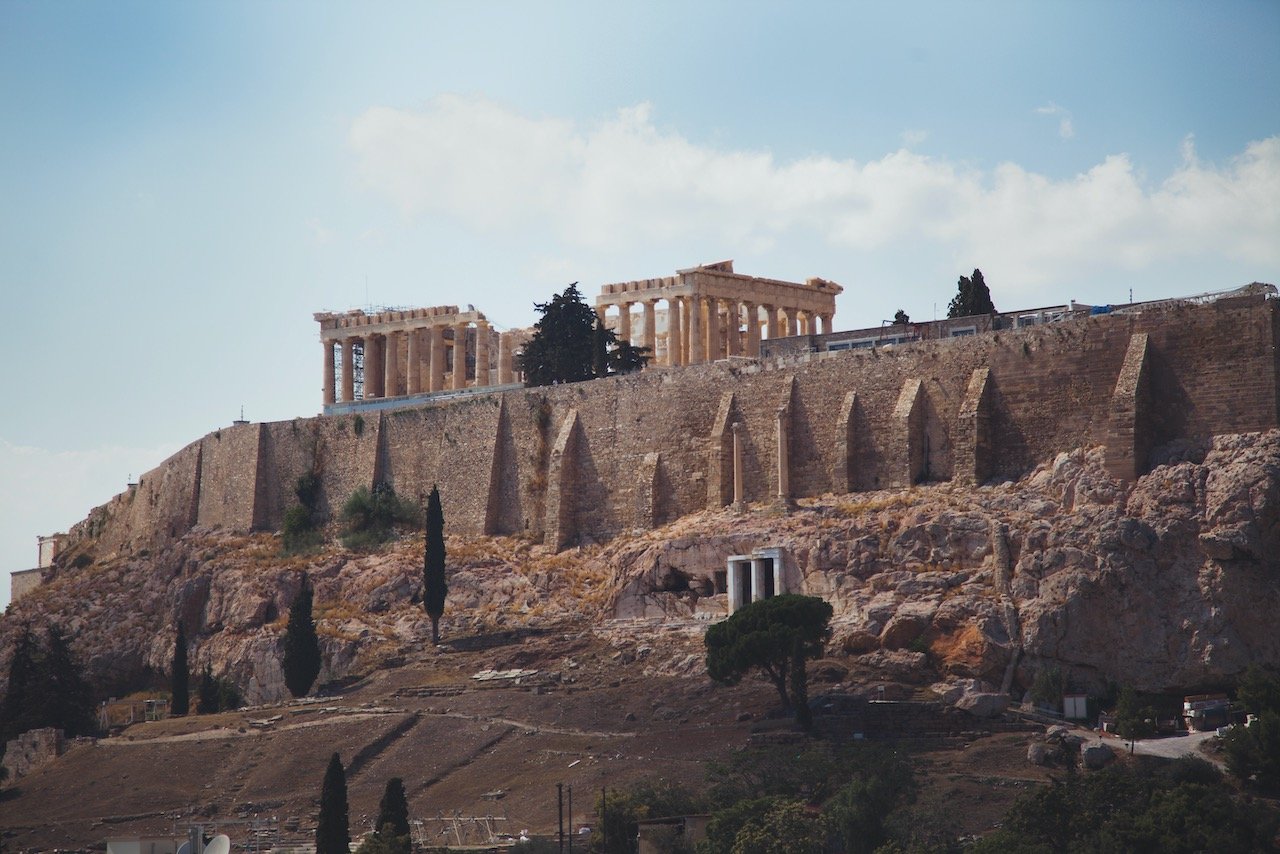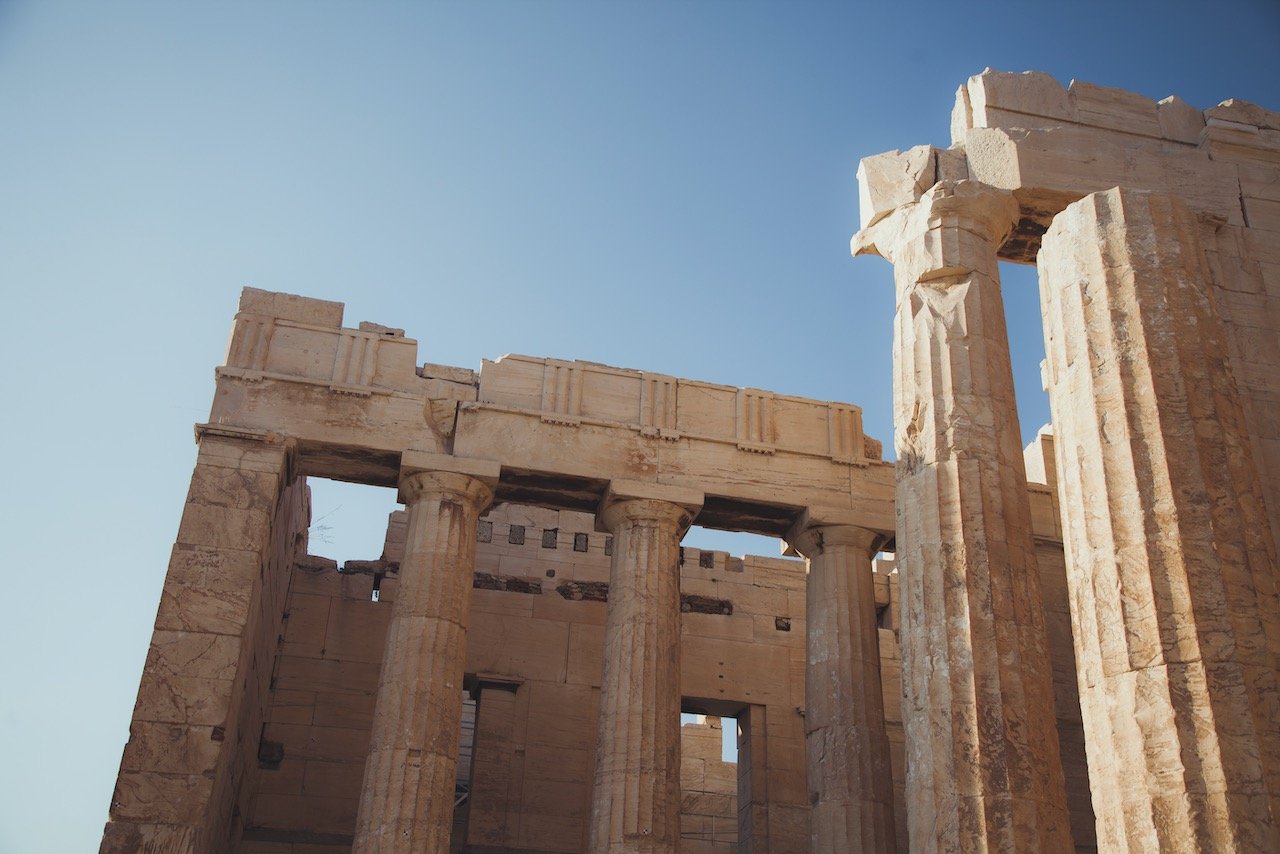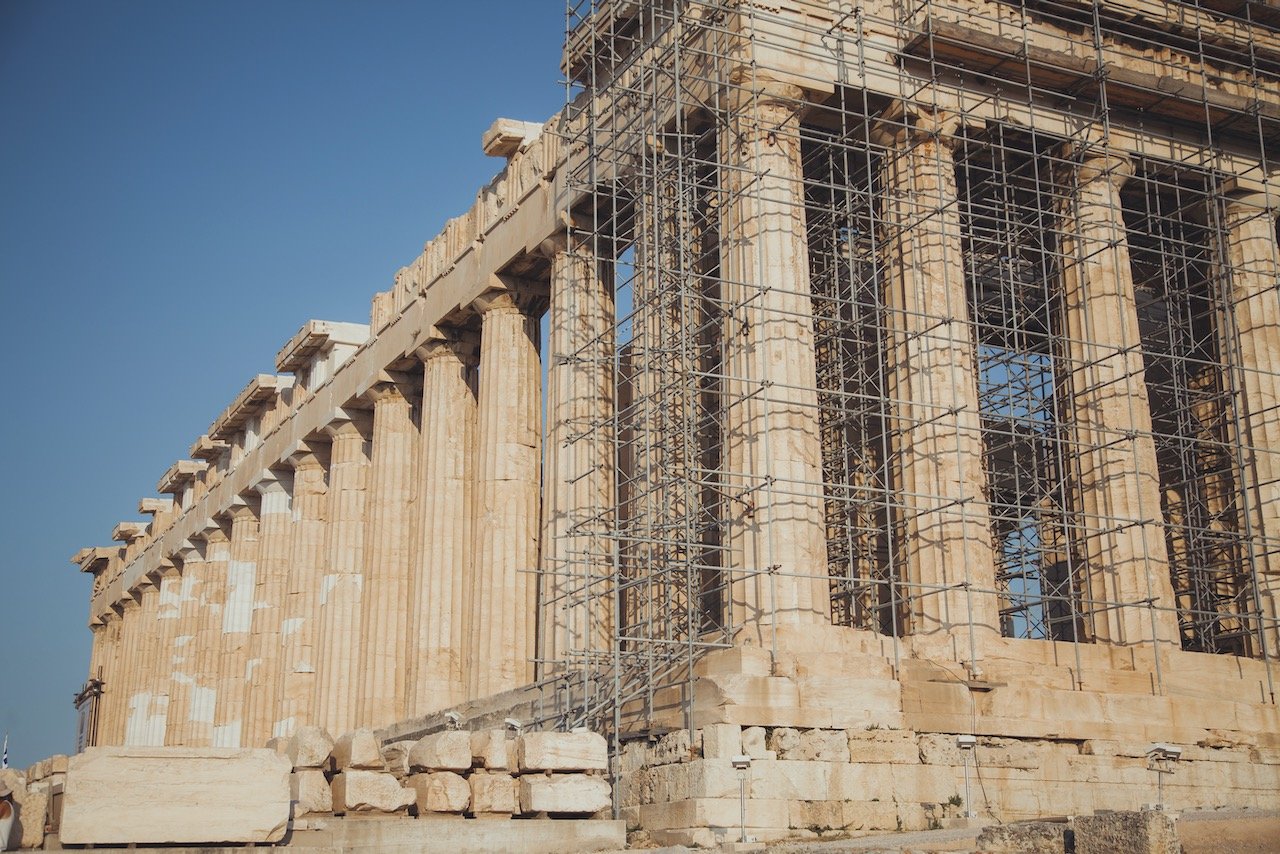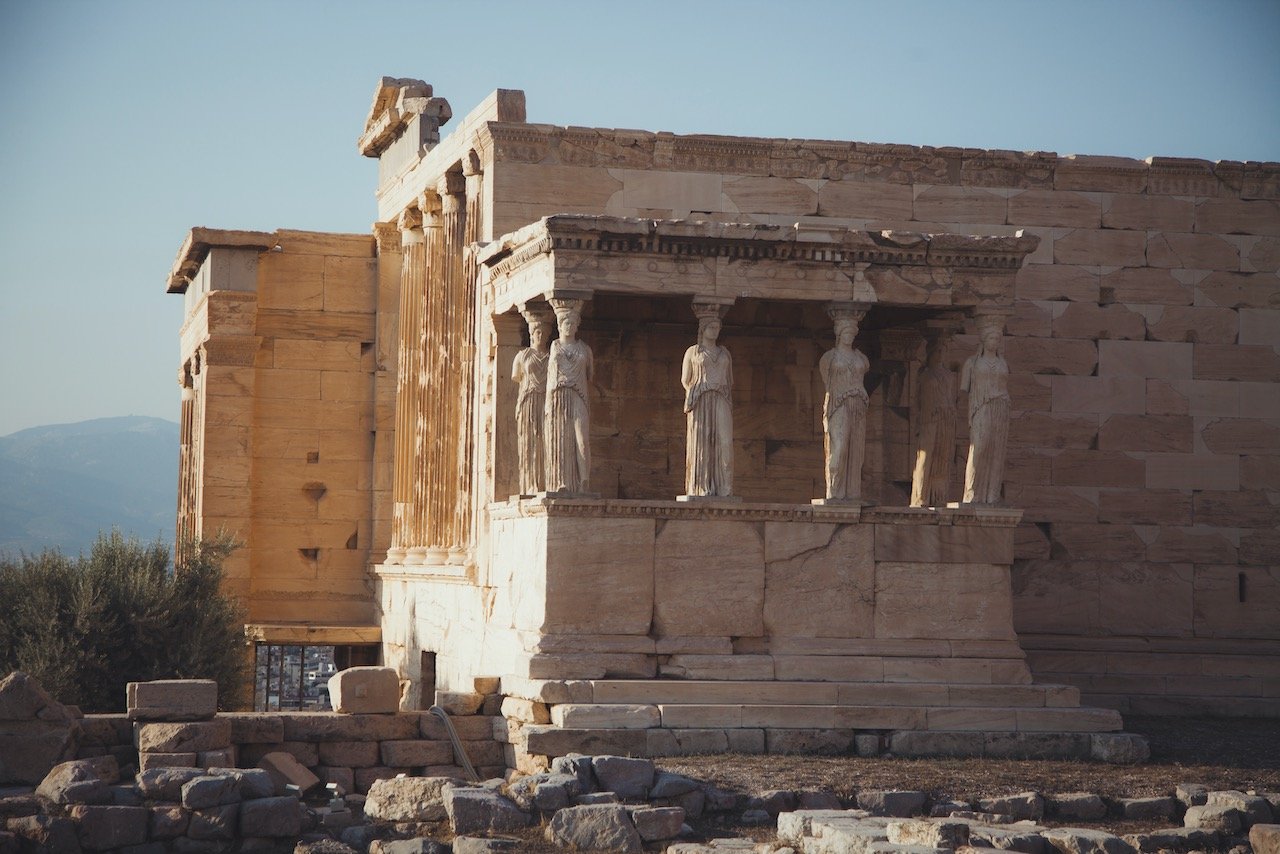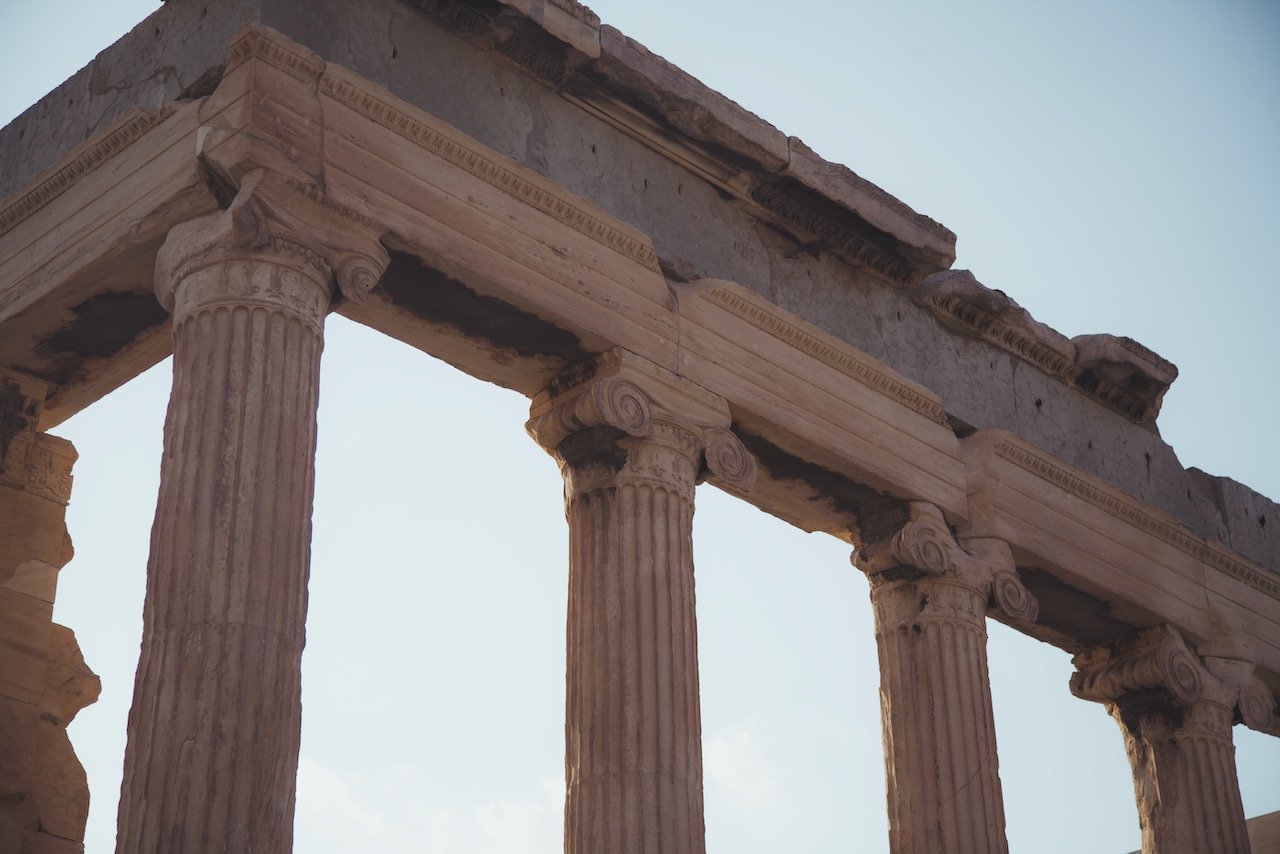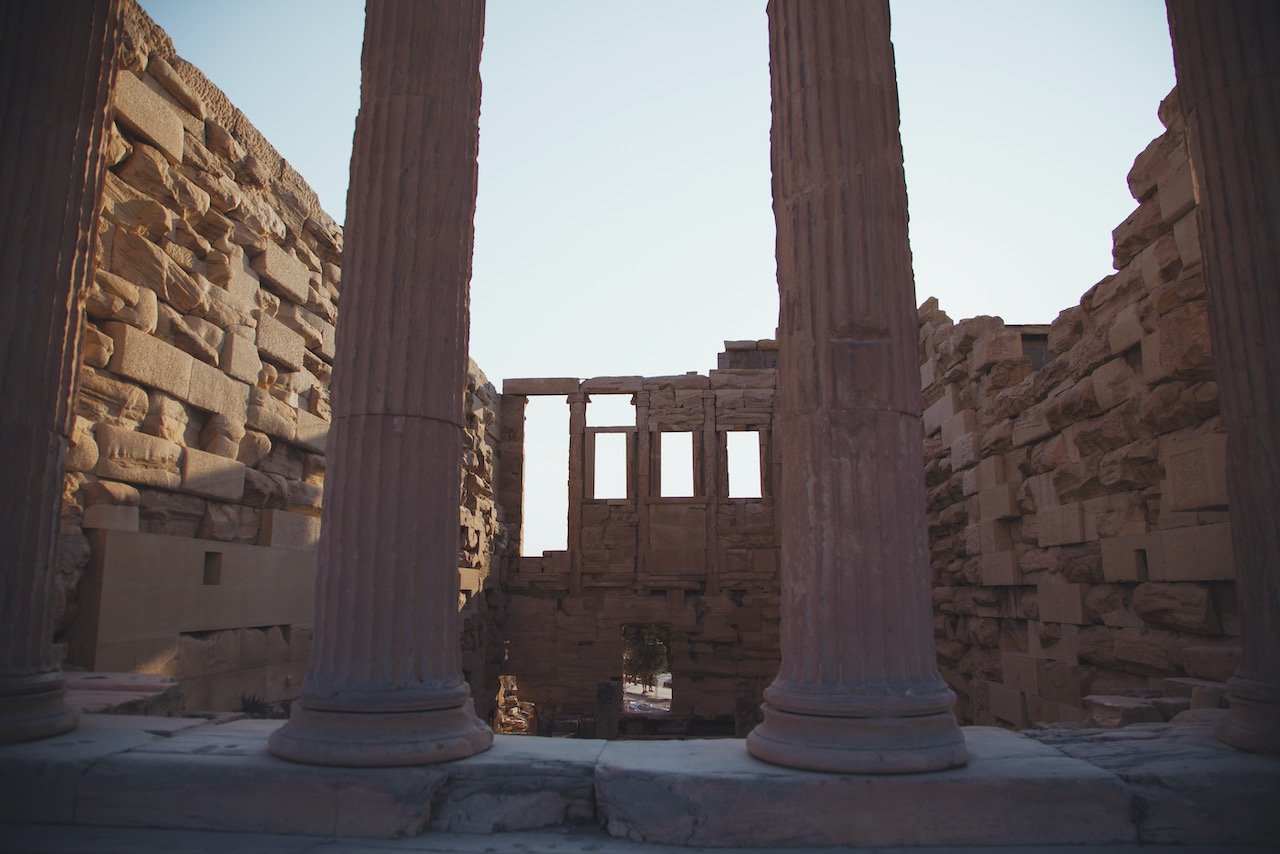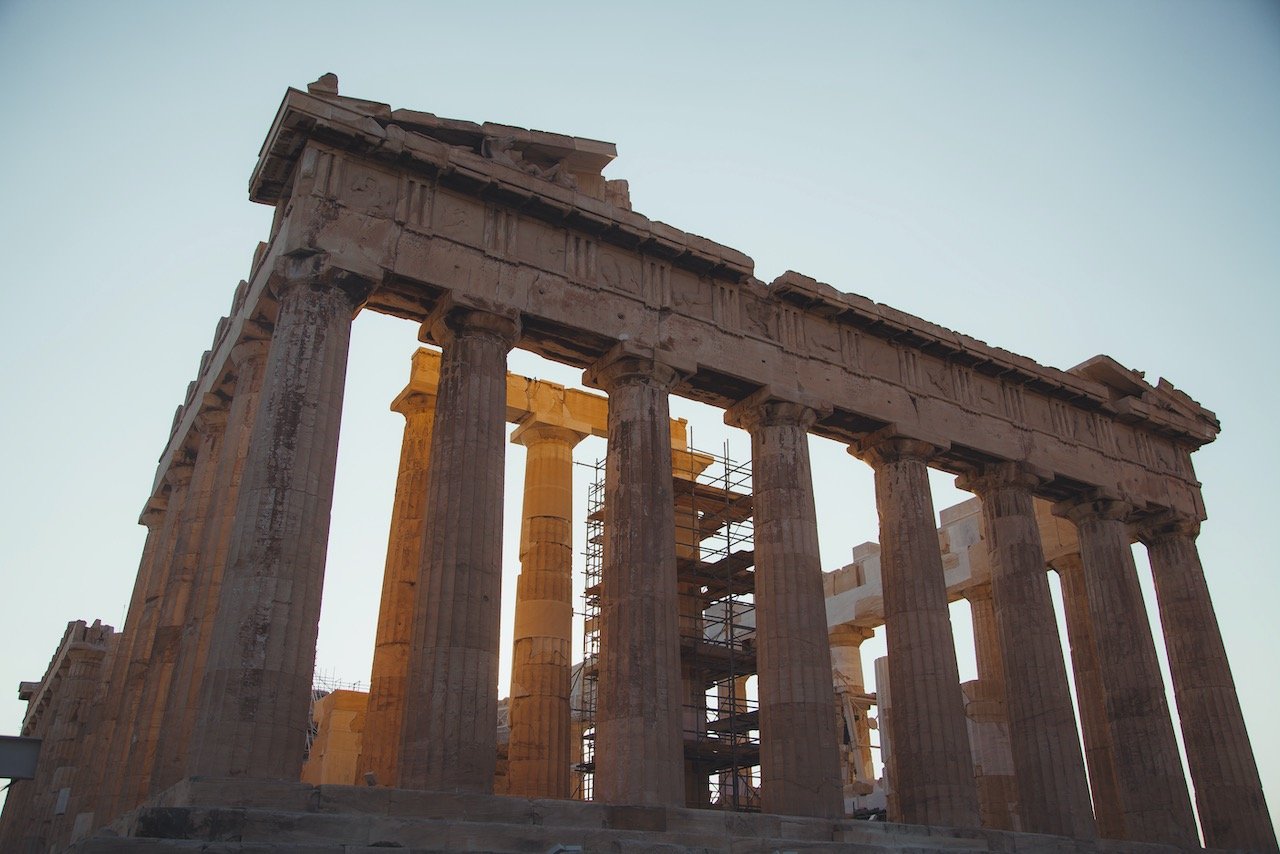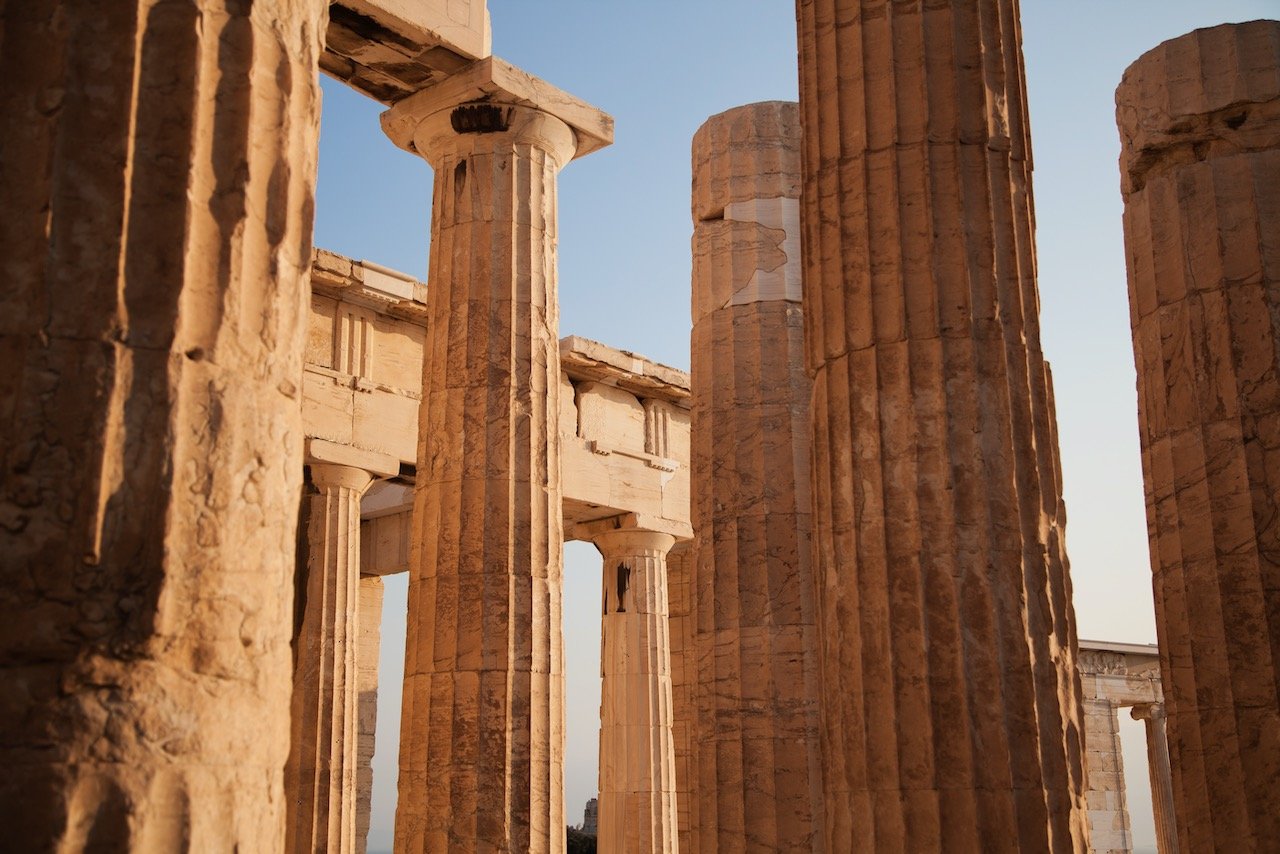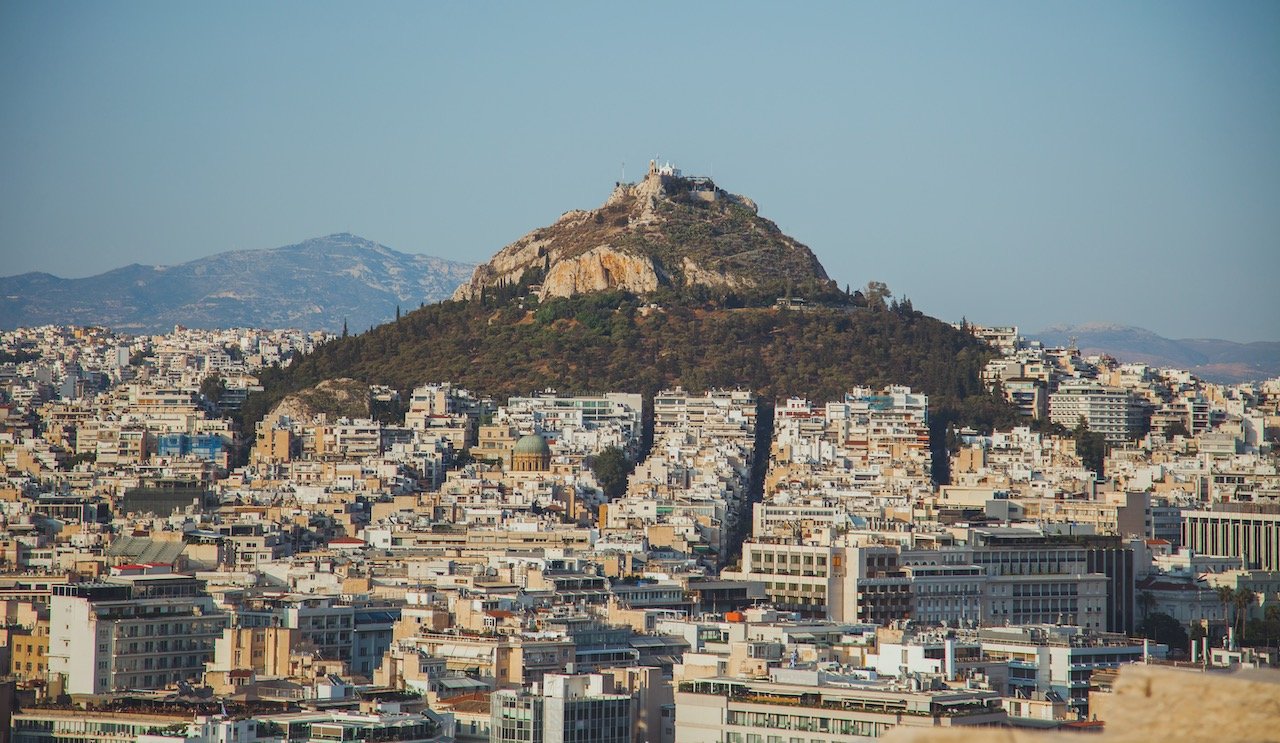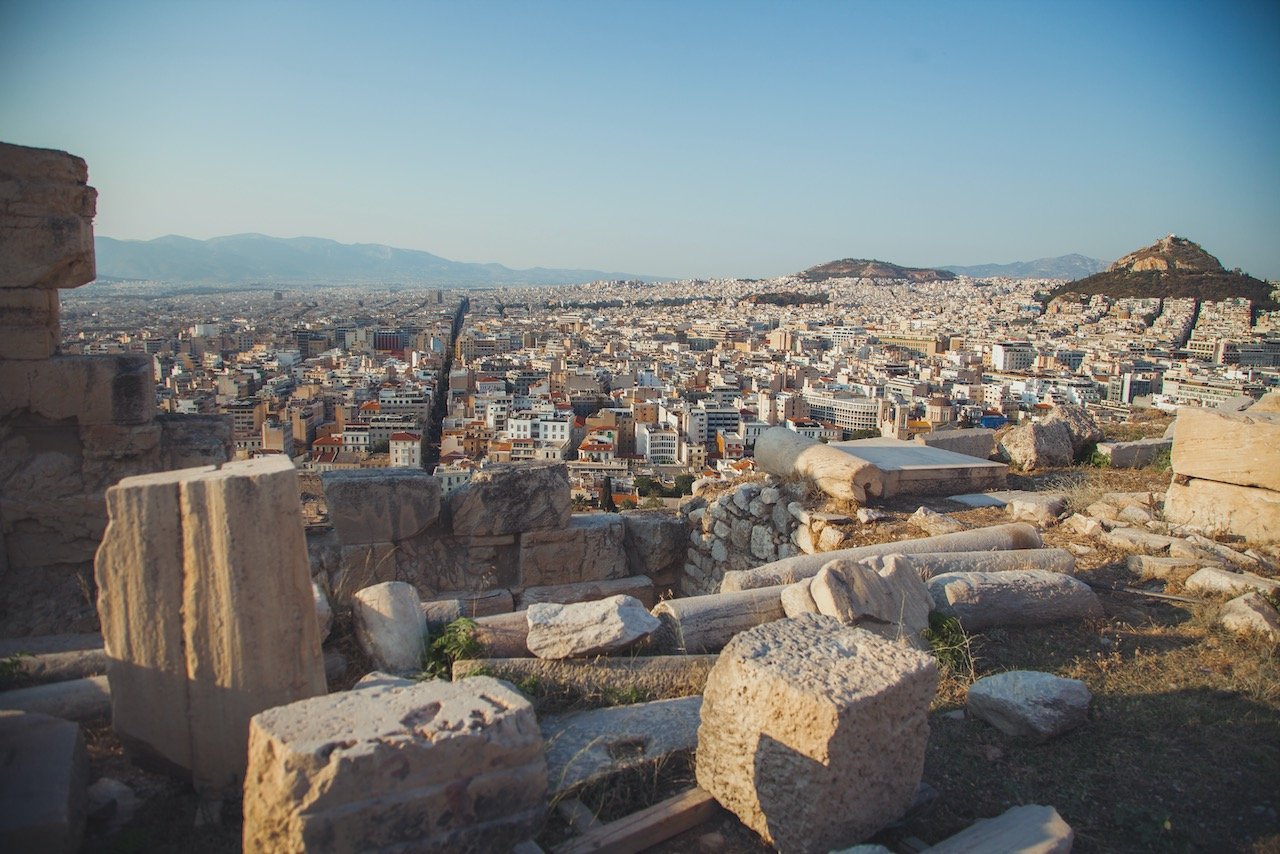What to see in the Greek capital city of Athens
(Some links in this post are affiliate links. If you click through and take action, I'll be compensated.) If you are also interested in any PRINTS from any of my posts, be sure to check out my store where you can buy prints as posters, in metal/wooden frames or on canvas.
Athens is arguably one of the oldest cities in the history of the world. It is considered the birthplace of Western democracy and is presently home to 3.8 million people. The oldest known date of human presence in Athens is somewhere between the 11th and 7th Millenia BC. Furthermore, the city has been continually habited starting in 3000 BC, or for the last 5,000 years to Present Day.
When in school, we all learn about Ancient Roman and Greek cultures, but what is even more interesting is how the two cultures overlap and how the demise of one let to the rise of the other. Greece was divided into a variety of city-states, that were all conquered by the Romans by 146 BC. The inhabitants of these conquered territories were then forced to pay heavy taxes. Luckily, the Macedonians led by Alexander the Great, adopted and spread the Greek culture.
Present day, Athens is an epicenter of cultural heritage, with countless museums, temples, ruins, shrines, etc. It is a dream destination for people who love ancient history. Even if history is not your forte, the city itself is very picturesque and the food is phenomenal. Athens to me reminded me of my time in Istanbul, a city that appeals to all the senses, at the same time. It is hectic, busy, moving, but it is part of the entire experience, making immersion into the city that much more satisfying.
We can here in August of 2023 at the end of our three week holiday. The beginning of our holiday started in Rome, so we felt that ending in Athens would be a perfect historical counterbalance between both ancient civilizations. We were also here when it was stupidly hot, which may be the new normal in this day in age.
This is a guide about our time in Athens, Greece where I will highlight some of the places we found enjoyable. This post is not comprehensive, but just the sights that we can personally talk about that we would recommend. A Google Map of these places can be seen at the end of this post.
How to get to Athens
Book yourself a flight to Athens International Airport Eleftherios Venizelos (ATH), which will take you just outside the Greek capital. Then from here, you have a few options:
Bus - You can take the X95 bus to Syntagma Square, which takes about 60 minutes while costing about 5.5 Euros. If you go during rush hour, a typical 45 to 60 minute journey can take in upwards of 90. You can buy tickets on board or at the airport information booths.
Train - You can take Metro Line 3 to Syntagma Square stop (Athens city center). The trains run every 30 minutes from 6:30am to 11:30pm, 7 days a week. One way is 9 Euros, while return tickets are 16 Euros. The journey takes about 40 minutes.
Taxi - You can find a taxi rank outside Exit 3 of Arrivals at the airport. There are two flat rate taxi fares:
40 Euros between 5am and 12am
55 Euros between 12am and 5am
Tickets for Acropolis Attractions
There are a few things to keep in mind when you buy your tickets for Athens attractions. I would suggest first purchasing your tickets in advance online, to save you precious time that you don’t have to spend in the awful Greek heat during summer.
Secondly, you can purchase tickets that offer admission to many different temples and attractions (Combined - 30 Euros), or you can purchase a simple day ticket for one thing (Single Use - 20 Euros). It depends on your time and preference but you get more bang for your buck with the former. The combined ticket offers entry not just to the acropolis, but also: the Ancient Agora, Hadrian's Library, Kerameikos, Aristotle's School [Lyceum], Olympieion, and the Roman Agora. The official website for purchasing tickets is here.
Athens Gate Hotel
While I usually don’t write much about the hotels we stay in, I couldn’t speak more highly of the Athens Gate Hotel where we stayed for three nights. The views from the top floor of the hotel to the Parthenon are outstanding! Booking a table to the rooftop restaurant way in advance is high suggested. You can go up there anytime from drinks though!
Acropolis
As alluded to before, the Acropolis of Athens, or simply the Acropolis, is rocky outcrop which houses many of the ancient buildings of great historical and architectural significance of Athens and the Greek Empire as a whole. The term ‘acropolis’ is also quite generic as a whole and there are many of these acropoli across Greece. Specifically, the acropolis at Athens was known as Cecropia.
It wasn’t until the 5th century BC where Pericles commanded that buildings be constructed onto the hill, such as the Parthenon, Propylaea, the Erechtheion, and the Temple of Athena Nika. You will see all of these temples still, or remnants there of, still on the Acropolis hill. An acropolis ticket will give you access to all of them.
Parthenon
The Parthenon is perhaps the well known ruin in Athens. It stands on the Acropolis and was dedicated to Athena, the goddess of wisdom in the 5th century BC. It was built as a commemoration for the Hellenic victory over the Persian Empire during the Greco-Persian Wars. The structure served as a treasury for some time then was converted to a Christian church, then a mosque after the Ottoman Empire conquered the land in the 15th century.
Unfortunately during the Morean War, a bomb landed on the structure which was used as a munitions depot. This severely damaged the building. Sadly, the 7th Earl of Elgin from the UK took many surviving pieces of sculpture from the Parthenon (known as the Elgin Marbles) and took them back to England. They are now on display in the British Museum in London. This is a point of contentious debate between Greece and England that continues to this day.
Temple of Olympian Zeus
As with some temples in Greece, there are significant portions of them missing, whereby one must use their imagination to see them in their previous glory. This is definitely the case with the Temple of Olympian Zeus. You can get a great view of it from above from the Athens Gate Hotel. This temple was dedicated to Zeus, leader of the Gods and took 638 years to be completed (6th century BC to 2nd century AD). The temple included 104 Colossal columns and was the largest temple in Greece.
Compare this with what it looks like today; 16 of these original columns after being pillaged by barbarians in 267 AD and then being shuddered. Such a sad fate for a glorious temple!
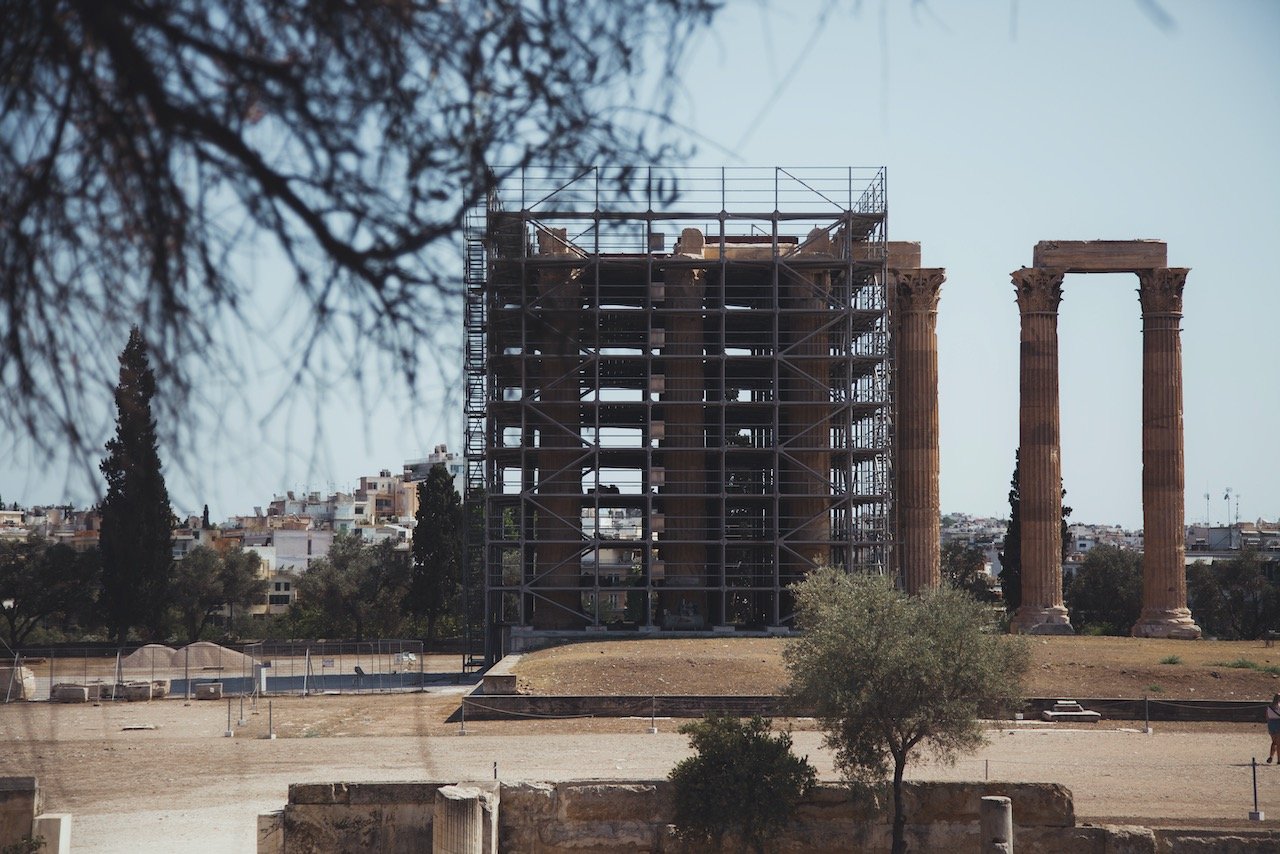

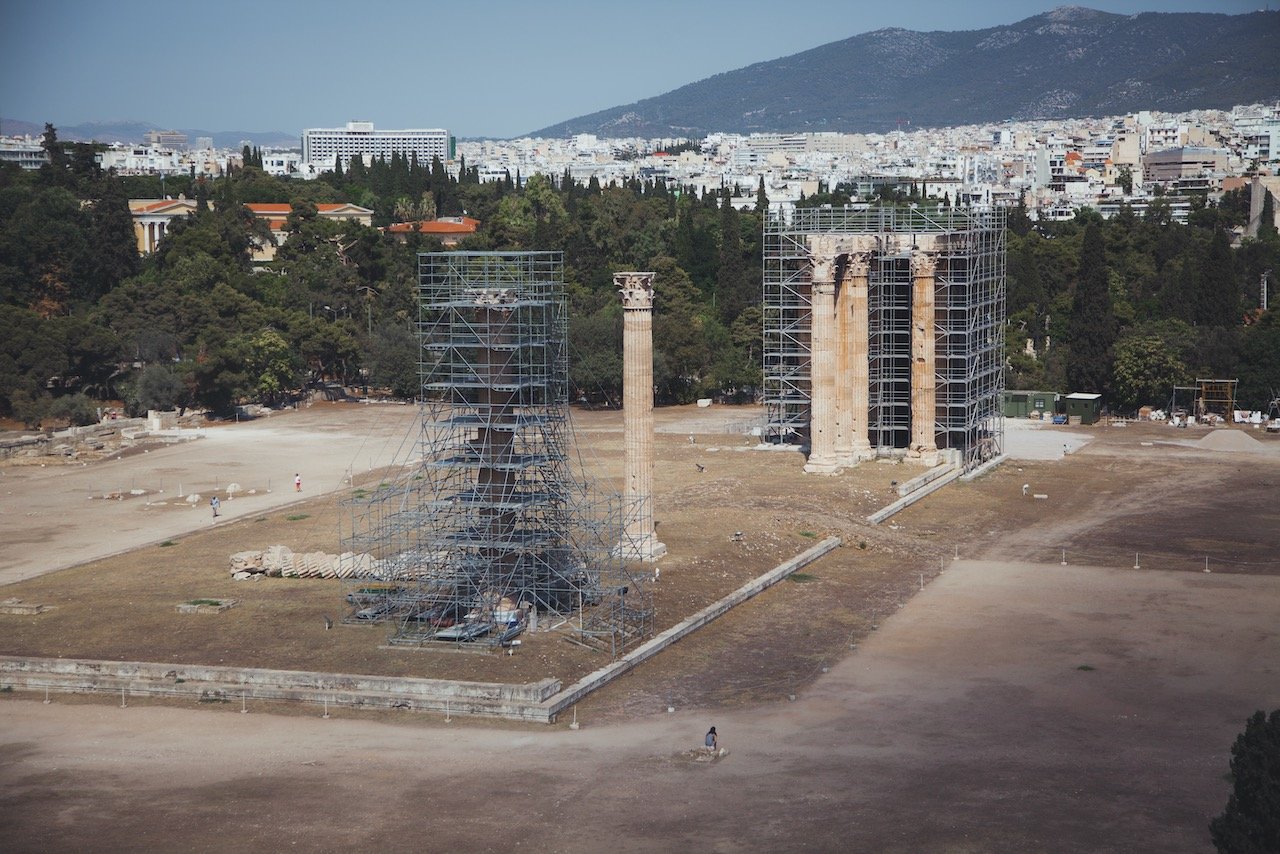
Erechtheion
On the north side of the Acropolis sits a building dedicated to the Goddess Athena. Oddly, the temple has also become a place to worship Poseidon (otherwise known as Erechtheus). In fact, follows of both god and goddess both worshipped at this temple for their deity. It’s exact date of construction is not known but estimated to be between 421 and 406 BC. The temple is a prime example of the classic Ionic style and is the inspiration behind later Hellenistic, Roman, and Greek Revival architectures.
Temple of Athena Nike
This temple, also located on the Acropolis, is dedicated to both goddesses Athena and Nike. Nike is the goddess of victory, while Athena was the goddess of wisdom. Since both of their representations were of victory, these two goddesses were worshiped especially during the Peloponnesian War. Like many temples of its time, it was built around 420 BC and a prime example of a fully Ionic temple on the Acropolis.
Theater of Dionysus
This ancient theater is located on the southern slope of the Acropolis. It had experienced some modifications over the years, such as the addition of an orchestral pit in the 4th century BC. Back in its heyday, it had a capacity of nearly 25,000. Unfortunately it fell into decay during the Byzantine period but has since been restored to its former glory. What is remarkable is just how clean the theater is after restoration. The marble blocks look like new with such a shine and luster.

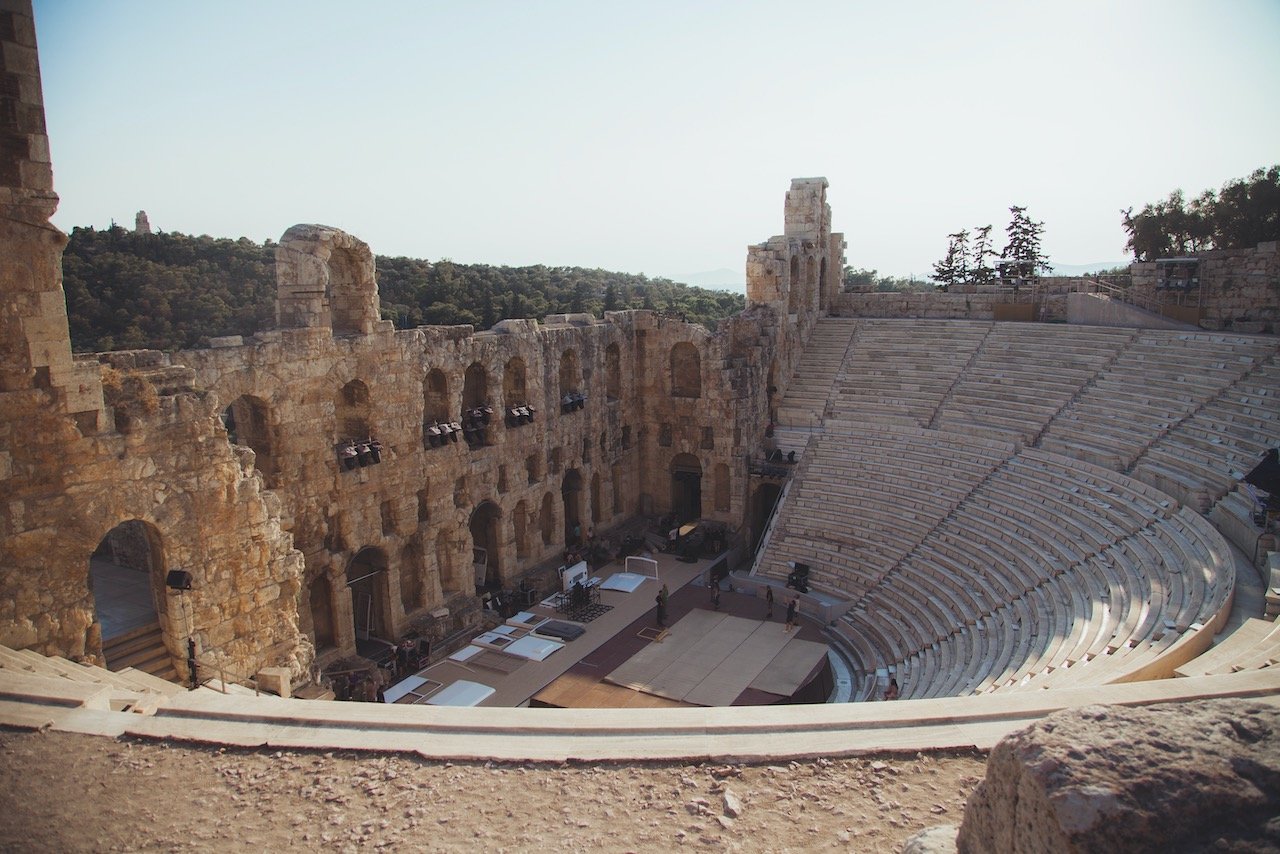
Areopagus Hill
The Areopagus Hill is located northwest of the Acropolis. Its name comes from the Greek name ‘Areios Pagos’, meaning ‘Hill of Ares’, the God of War. Legend has it that Ares was supposed to be on trial by the other Gods on Areopagus Hill for murdering Halirrhothius, Poseidon’s son. I’m all about ancient Greek myth but sometimes it’s hard to remember who is who with all these clever and unique names.
Mount Lycabettus
This is probably one of the best places in Athens to get a great view of the city, that is NOT the Acropolis. It is a limestone hill standing 277 meters above sea level. Good news for you is that there is the Lycabettus Funicular that can whisk you to the top, starting from Kolonaki at Aristippou street. On top of Lycabettus standings the St. George Chapel as well as a restaurant. They say that Mount Lycabettus was created by Athena, when she dropped the limestone mountain while carrying ‘materials’ to construct the Acropolis.






